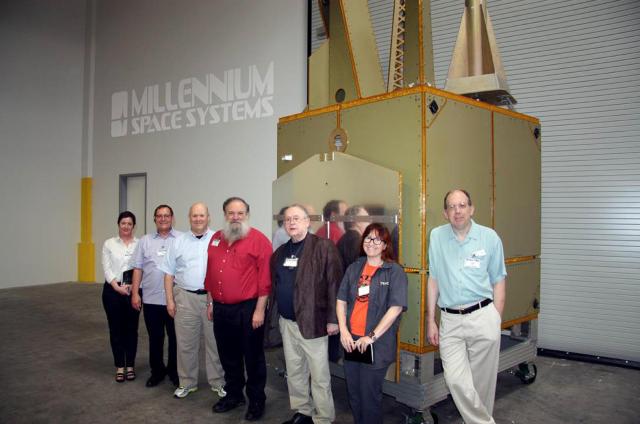
AMSAT members with the amateur radio 5 GHz and 10 GHz transponder Phase 4B MSS geosynchronous satellite
Ofcom is consulting on plans to put Wi-Fi across Amateur and Amateur Satellite spectrum in the 5 GHz band
The Ofcom consultation document implies that amateur satellites in 5 GHz only operate in very Low Earth Orbits – This is false.

UNITEC-1 Venus spacecraft with amateur radio 5840 MHz payload
A5.28 Amateurs can access 5650-5850 MHz with amateur satellite Earth-to-space links in 5650-5670 MHz and space-to-Earth links in 5830-5850 MHz. Most current amateur satellites are typically nano or picosats (also called ‘cubesats’) that occupy slightly elliptical sun-synchronous low earth orbits at 60-800 km altitude. These smaller satellites have relatively low power and antenna gain.
Radio amateurs have sent 5 GHz payloads into far higher orbits. Examples are the Venus orbiter Unitec-1 which operated on 5.840 MHz and AO-40 which is in a 58,836 km High Earth Orbit (HEO). The 5 GHz band will also be used by the Geosynchronous Phase-4B payload and the HEO Phase-3E satellite both of which are currently under construction.
The use of 5725-5850 MHz for Wi-Fi would adversely affect reception of the network of amateur weak-signal propagation beacons.
The Ofcom press release says:
As broadband delivered to the home gets faster, people increasingly expect their Wi-Fi to provide several services at once – such as video streaming, video calls, gaming and remote working. This demand puts pressure on the spectrum which carries Wi-Fi signals.
Most Wi-Fi routers in the UK currently use a part of the spectrum called the 2.4 GHz band, but this is becoming increasingly congested and can impair broadband delivery of high data rate applications such as streaming video or live TV.
Many people now have newer broadband routers, which use not only the 2.4 GHz band, but also the 5 GHz band – which offers much more spectrum and can accommodate wide channels suitable for high data rate uses.
To make connections faster, Ofcom is proposing to open up an additional ‘sub-band’ within the 5 GHz frequency range for Wi-Fi – while ensuring protection for other users, such as satellite services.
The extra sub-band would increase the number of 80 MHz channels available for Wi-Fi from four to six, to accommodate data-hungry applications. These extra channels – which are already being used in the United States – could be opened up in around two to three years.
The consultation closes on July 22, 2016.
Ofcom 5 GHz consultation http://stakeholders.ofcom.org.uk/consultations/5-GHz-Wi-Fi/
The UK Microwave Group loans equipment to get amateurs started on 5.7 GHz
http://www.microwavers.org/6cm-loan-system.htm
Network of amateur weak-signal 5.7 GHz propagation beacons
http://www.microwavers.org/maps/6cms.htm
Unitec-1 amateur radio Venus spacecraft
http://www.southgatearc.org/news/may2010/unitec1_signal_received.htm
![]()